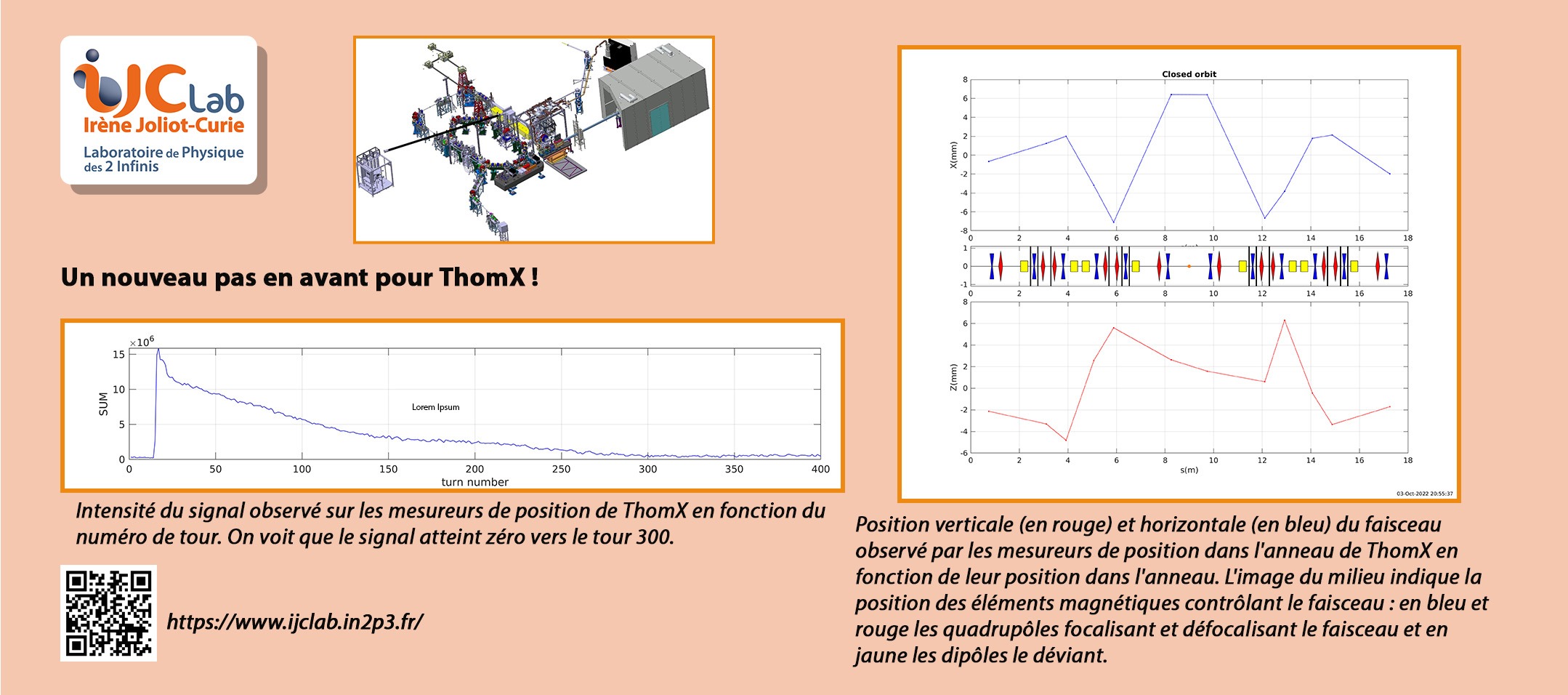
The increasing power of lasers allows the development of high power photon sources based on Compton backscattering. Thanks to this approach, X-rays of a few tens of keV can be produced using laser pulses which strike bunches of electrons accelerated to a few tens of MeV. This process makes it possible to design compact sources (installations of approximately 100 m2) which provide beams of high intensity, high luminosity (between laboratory X-tubes and synchrotron sources) and tunable in energy in the 20-100 keV range. With such devices, ambitious experimental methods currently reserved for synchrotron facilities can become accessible to a laboratory, a museum or a hospital.
Among the high-flux Compton source projects under development around the world, the ThomX project is particularly advanced. The nominal characteristics of the X-beam will be sufficient to carry out a wide range of experiments in various fields (biomedical, preservation of cultural heritage, materials science...). In addition to IJCLab, ThomX involves seven partners (Soleil, lnstitut Néel, Inserm, ESRF, LAMS, CELIA, Thalès). The source comprises a photo-injector and a linear accelerator which injects a 50 MeV electron beam into a small storage ring. The interaction between the electron beam and a laser amplified by a Fabry-Pérot cavity located on the ring will generate at each turn a 45 keV X-ray pulse directed towards the experimental area, located in the Iglex.
A first electron beam was obtained in October 2021, followed by a beam optimization phase. Following the authorization given by the Nuclear Safety Authority at the beginning of August, the start-up of the ring continues. A first injection into the ring had been successful on September 9, the first turn had been made on September 19, but technical problems prevented the beam from making additional turns. This difficulty was understood on September 30, in connection with a defective connection on a magnet, and its correction made it possible to reach 300 revolutions in the storage ring, that is to say the maximum number of revolutions possible before ignition of the RF cavity. The next step will be to fire the RF cavity into beam so that the beam can be kept in the ring for the nominal duration of 20 milliseconds.























